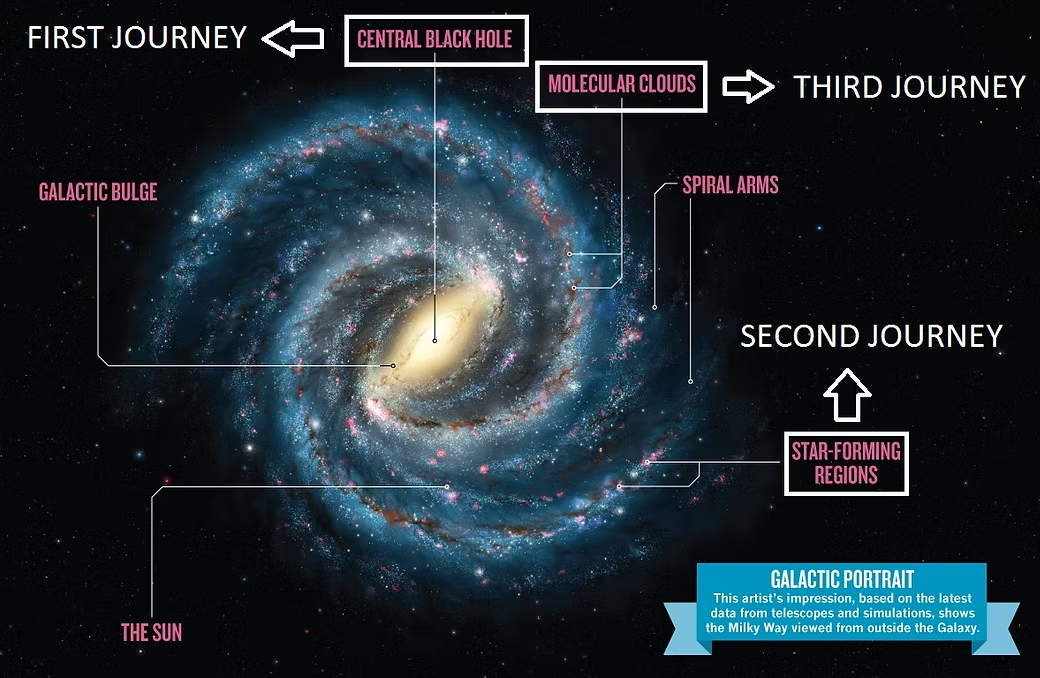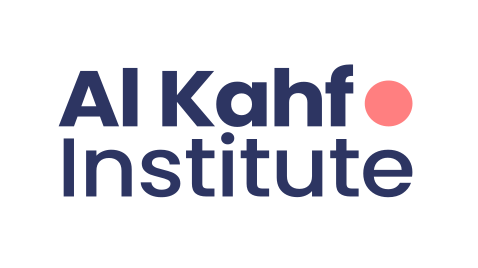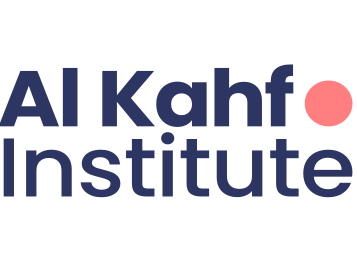
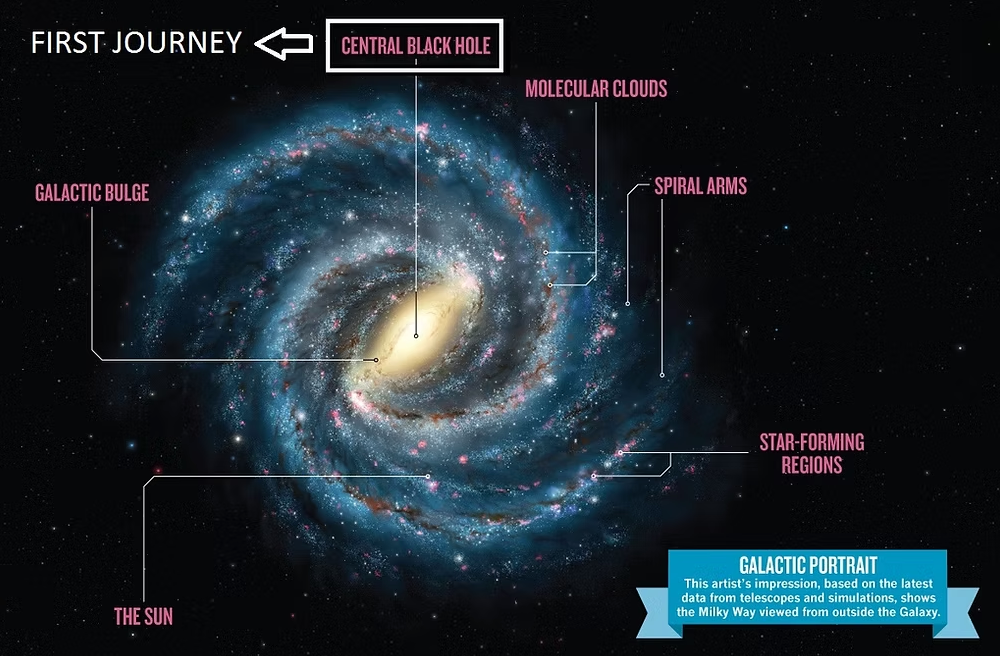
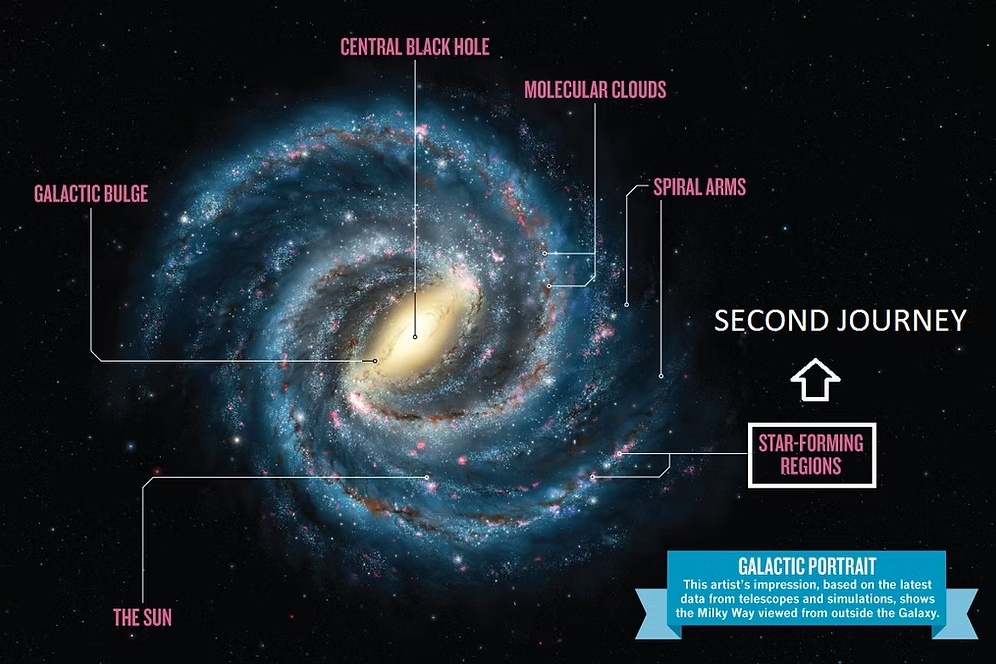
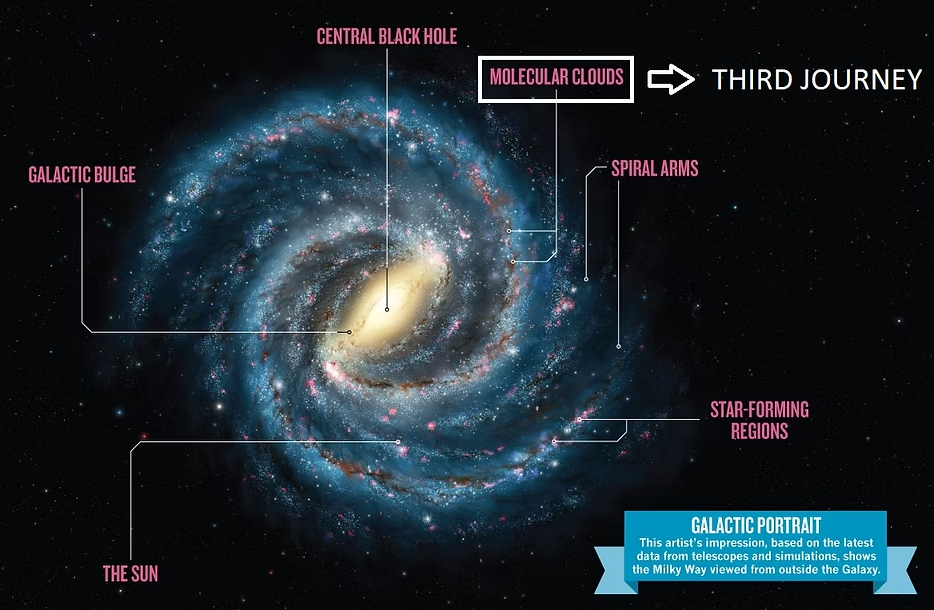
Dhul-Qarnayn's Space Travel
In every era, there have been verses of the Quran that are not fully understood. Surah Kahf is one of the most intriguing surahs of the Quran. All the stories in this surah contain many subtle and profound meanings and are not easily understood. The story immediately preceding the story of Dhul-Qarnayn, the story of "Khidr and Moses," tells of Moses' patience with Khidr, who committed acts he could not understand and considered cruel, and of his patience, ultimately understanding the true nature of these acts. The central theme of this story is this: Even if you do not know or understand the true nature of some of the things God has revealed, continue to believe and trust in God. To test our understanding of this central idea, God placed the very complex and open-ended story of Dhul-Qarnayn immediately after this story. Because this story is so open-ended, many different opinions have been put forward, and those who have analyzed the story superficially have claimed that it contradicts reason and science. I will now attempt to explain this story, which contains many seemingly meaningless expressions at first glance, in the light of science. The basis for what I am about to say is based on the theologian İskender Türe's book "Dhul-Qarnayn: The Man Whose Space Travel Is Described in the Quran."
Everything mentioned here is not merely superficial assertions, but has been established through lengthy and comprehensive research. We are not the first to claim that Dhul-Qarnayn's journeys took place in the sky. Qab al-Ahbar said that Dhul-Qarnayn tied his horse to a star and was warned about this by Muawiyah (may Allah be pleased with him).[1] Ali (may Allah be pleased with him) said that God placed the clouds at Dhul-Qarnayn's disposal, and that these clouds carried him wherever he wished.[2] The story begins with the following verses:
83- And they ask you about Dhul-Qarnayn. Say, "I will recite to you a memory from him."
84- Indeed, We strengthened him on earth and gave him a means of everything.
85- And he followed a cause (ATBEA).
God gave Dhul-Qarnayn a SABAB (reason). While SABAB is simply translated as "path" in some interpretations, the true meaning of this word, repeated throughout the story and open to different meanings, will provide us with one of the keys to this story. According to Tajul-Arus, SABAB originally means "rope for climbing a palm tree" in Arabic. In other words, it is a tool used to climb something high. "Zayd inbi Aslam", while explaining this cause, said it means "way to heaven." The word SABAB appears five times in the Quran, and in four of these it is used in the sense of "thing that enables one to ascend to the heavens."
"Or do they have dominion over the heavens and the earth and what is between them? If only they could find ways and ascend to the heavens! (Surah Sad, 10)"
"Pharaoh said, 'O Haman, build me a high tower, perhaps I will reach the ways of the heavens and see the God of Moses! Indeed, I consider him a liar.'" (Surah Al-Mu'min, 36-37)
"Whoever thinks that Allah will never help him in this world or the Hereafter, let him find a way and reach up to the sky to cut it off, and then see if the way he finds can remove the thing that angers him. (Surah Al-Hajj, 15)
The use of this word in this sense throughout the Quran indicates that the SABAB to which Dhul-Qarnayn followed also led him to the heavens. Furthermore, the word (ATBEA) used in the verse means "to follow, to obey." This suggests that Dhul-Qarnayn had no control over the journey and was merely a follower.
Before delving into the details of Dhul-Qarnayn's journeys, let's take a look at our Milky Way Galaxy so we can more easily visualize them. The diagram below is taken from a completely secular source and depicts our Milky Way Galaxy according to the latest scientific information.
86- Finally, when he arrived at the setting place of the Sun (Shams), he found it setting in a black mud (Ayn al-Hamie). There he encountered a people…
The Sun does not set on Earth, but we do. While we see it in this state, we are actually in space. Therefore, it is impossible to determine a specific point on Earth where the sun sets. To understand where the sun actually sets, we need to know where it is moving. The Quran provides us with the answer in Surah Yasin: “The sun sets in its appointed place. This is the decree of Allah, the Almighty, the All-Knowing.” (Yasin 38)” The Sun is moving towards the point where it will cease and disappear, and this point is named in Surah Al-Kahf as the “place of the setting Sun.” This path of the Sun is called the Solar Apex in astronomy, and Dhul-Qarnayn traveled to the end of the Solar Apex during his journey. What he encountered at the end of this path is even more interesting. Dhul-Qarnayn witnessed the setting of Shams (although this word is usually translated as Sun, it can be used for all stars) in the Ayn al-Hamia. Although Ayn al-Hamia is translated as “a dark mud” in traditional interpretations, in today’s terminology it reminds us of a black hole. Considering that there was no word for black hole in Arabic 1400 years ago, Ayn al-Hamia is actually a very appropriate term for a black hole.
We see that it is abir. The word "ayn" means "eye" in Arabic. Considering that both an eye and a black hole are holes that absorb light, there is a clear similarity between an eye and a black hole. We can think of the solar apex as a train that ends in a black hole, and our Sun is in the middle of this train. The black hole mentioned in the verse is likely the supermassive black hole at the center of the Milky Way Galaxy.
86- He encountered a people there. We said, "O Dhul-Qarnayn! You will either punish them or choose to be kind to them."
The strange point in this part of the verse is the word "torment." Why would God give Dhul-Qarnayn the authority to punish these people? The answer is simple: These people were approaching a black hole along with their own star. If Dhul-Qarnayn had not saved them, they would have fallen into the black hole, and the word "torment" is appropriate to describe this disaster.
87-88- Dhul-Qarnayn said, "Whoever does wrong, We will punish him. Then he will be returned to his Lord, and He will punish him with an unprecedented torment." And whoever believes and does righteous deeds, he will have a better reward. We will tell him what is easy from Our command."
89-90-91-. Then he followed another cause. When he reached the place where the Sun rises, he found it rising over a people whom We had not placed a covering between them and the Sun (Shams). Thus it is. Indeed, We have encompassed those with him with Our knowledge.
This verse describes Dhul-Qarnayn's second journey, and this journey was in the opposite direction of the first, namely, towards the Solar Antapeks. The phrase "a people whom We had not placed a barrier between them and the Sun (star)" suggests that this people's planet lacked an atmosphere, as the atmosphere is a covering between creation and the Sun. The atmosphere reflects the harmful rays from the Sun, acting as a protective barrier between us and the Sun. Dhul-Qarnayn traveled to the place where the Sun was formed and visited a planet that lacked an atmosphere, likely because it was still newly formed. Another interpretation could be that, based on the fact that God likens the night to a covering for us in several verses, the phrase "having no covering against the Sun" refers to a planet on which there is no night. This is scientifically possible if there are binary stars moving at a suitable period. Most (85%) of the stars in the universe are binary stars. In both cases, what is certain is that Dhul-Qarnayn traveled to the region of star formation in our galaxy.
92-93- Then, he was again subject to a reason. When he reached between two barriers (Suddayn), he found people in front of them who could barely understand a word.
This is Dhul-Qarnayn's third journey. The word "Suddayn" in this verse, translated as "barrier" (barrier), is notably controversial in translations. While some translators assume this word refers to mountains, this is merely a hypothesis. Since Arabic does not have vowels, there is also disagreement in its pronunciation. Reciters other than Asim read this word as "Suddayn," and according to older dictionaries, the word "Sudd" means an invisible obstacle, cloud, or mist. Asim, however, read this word as seddeyn, while sedd, according to older dictionaries, means a concrete and solid barrier. To understand the word more accurately, let's consider the following verse from Surah Yasin, which contains the same word:
“We set up a barrier before them and another barrier behind them, so We surrounded them, and they saw nothing. (Surah Yasin, 9)”
The word in this verse should also be read as sudde because the barrier God refers to here is an abstract barrier that covers the hearts of the disbelievers. It is known that the disbelievers are not surrounded by concrete barriers. Since there is a similar disagreement in both verses, we can say that they should be read the same way and have the same meaning. Considering the aforementioned meanings of sudde, we see that there is a term in astronomy that perfectly corresponds to sudde: nebula (cloud). On his third journey, Dhul-Qarnayn must have arrived at a planet between two nebulae. This double-sided nebula may have been the double helix nebula near the center of our galaxy.
94- They said, "O Dhul-Qarnayn! The people of Gog and Magog are causing mischief on Earth. Shall we pay you a tribute for building a barrier (Suddah) between them and us?"
The word "Suddah" appears again in this verse. In this verse, those speaking to Dhul-Qarnayn demand that he build an invisible barrier (Suddah) against Gog and Magog. Invisible and abstract barriers can be represented today by missile shield systems or antivirus programs. The word "al-Ard," translated as "earth," does not necessarily refer to Earth; it can be used to refer to any place mentioned on it. This is the view of Islamic scholars.
95- He said, "The means in which my Lord has placed me (in Mecca) are better. Help me with your strength so that I may build a strong barrier (RADM) between you and them."
The word "Makkan" is derived from "place." This verse also means "the place where Allah has placed me is better." We can say that Dhul-Qarnayn thought that Earth was better than that people's planet and wanted to return to Earth when his work was finished. The people he was speaking to asked him to perform a SUDDAH, but Dhul-Qarnayn told them he would perform a REDM. REDM means a barrier with multiple layers. One of its meanings mentioned in old dictionaries like Lisan al-Arab is "a cloud with multiple layers."
96- Bring me iron blocks. When he had balanced the two ends, he said, "Burn them!" And when he had heated the iron to a flame, he said, "Bring me molten copper upon it."
This verse describes how the dam was built, but the description here is unlike any dam in the world today. Some scholars have stated that the construction of this dam was impossible with the technology of that time, and that its construction should be considered a miracle of Dhul-Qarnayn. Scholars like Elmalılı Hamdi Yazır have stated that this dam was not a concrete barrier, but a metaphorical one. We know that Gog and Magog will breach their barriers in the End Times and attack all of humanity, which is what the next verse refers to:
97-98- They could neither breach it nor penetrate it. Dhul-Qarnayn said, "This is a mercy from my Lord. When the promise of my Lord comes true, He will level it to the ground. The promise of my Lord is true."
This subject is expressed in Surah Anbiya as follows:
“When the way is finally opened for Gog and Magog, they will rush from every hill.” (Surah Anbiya, 96)
However, we know that there is no barrier imprisoning large numbers of people in the world. Even if such a barrier existed, it would have long since been overcome by airplanes or other technological devices. According to hadith, the people of Gog and Magog are more numerous than all other people. In other words, those who believe that this barrier exists in the world must accept that billions of people are trapped behind it today, unknown to other people. Those who make this acceptance must also believe that these two tribes, devoid of any traces or technology, will fight and defeat all of humanity. Since we know every inch of the Earth in this century, we don't need to be a genius to understand that the people of Gog and Magog do not exist.
The process described here is a chemical one. Hot iron is a good catalyst, and when oxygen is blown through it in reaction with molten copper, it releases methane and hydrogen gases. Since the verb used in the verse means "to blow with bellows," we can say that this process creates the flammable gases hydrogen and methane. Because these gases are so light, they rise quickly and escape to other planets due to their gravitational pull. This phenomenon is called "atmospheric escape" in astronomy and is one of the reasons the Moon lacks its own atmosphere. The gases on the Moon can easily pass to Earth, so we can say that part of Earth's atmosphere originated from the Moon. The gases created by Dhul-Qarnayn may have passed to the planets of Gog and Magog, where they may have formed multiple layers of gas (methane and hydrogen), as the word "REDM" suggests. Since the planets of Gog and Magog are unknown to us, we cannot know the nature of the barrier created by this gas layer. It is possible that this gas layer blocked the rays coming from the star, depriving Gog and Magog of light. Now, let's consider a hadith describing the barrier of Gog and Magog:
“Every day, Gog and Magog tried to penetrate that barrier. When they approached the sun's rays, their leader called out to them: ‘Go back and penetrate tomorrow.’ Then God made the part of the barrier that was carved stronger than the one before the next day. This continued until the appointed time…[3]”
This hadith supports the view that the barrier was made of gas. Since a solid wall would not have completely blocked the people from all sides, it did not completely block the sun's rays. However, the hadith indicates that Gog and Magog were completely deprived of sunlight. At the same time, it's not feasible to restore a solid wall daily, but a barrier composed of gases automatically restores itself daily because, with their fluid properties, gases immediately fill any holes created within them.
Now, our planet is approaching the planet of Gog and Magog, and when our planets come together, Gog and Magog will target our planet. You might think that this interpretation I've shared with you is based more on interpretation than on verses, but the traditional interpretation is also based more on interpretation than on verses. Dhul-Qarnayn has traditionally been understood as a mighty king with vast armies, but the verses make no mention of any of this. Now, let us share some hadiths that support our interpretation of Gog and Magog:
“The height of the people of Gog and Magog is half that of an average human. They have claws instead of nails, and their molars resemble those of predatory animals. One of their large ears serves as a bed, the other as a cover. They have no known male or female death. Neither their male nor female dies until they have produced a thousand children.”[4]
“They are among the unusual children of the sons of Adam. One day, Adam had a wet dream, and his semen mixed with the soil, and from this water, Allah created Gog and Magog.”[5]
These narrations indicate that Gog and Magog possess non-human characteristics. The narrations that say they have a single parent (Adam(pbuh)) and reproduce very quickly may indicate asexual reproduction. Considering the physical characteristics of Gog and Magog, we find the possibility of them being aliens quite high.
It is quite difficult to explain space travel using the words of 1,400 years ago to a people who don't even know that space exists. At the same time, this explanation must be so vague that it doesn't surprise or confuse someone reading it in the past. These truths should be kept in mind when evaluating the story of Dhul-Qarnayn. The interpretation I am trying to convey here is one of the perspectives that illuminate the story of Dhul-Qarnayn. There are those who argue that these journeys were not only space travel but also time travel. I have tried to share with you the most plausible of these possibilities. I believe that the verses of the Quran possess infinite layers of meaning and cannot be understood by everyone who reads them. As a result, a single verse Several different interpretations can be true simultaneously. I don't claim that this interpretation is the only correct one regarding the story of Dhul-Qarnayn, but I hope it will at least create a new perspective in your mind. And surely, Allah knows best.
